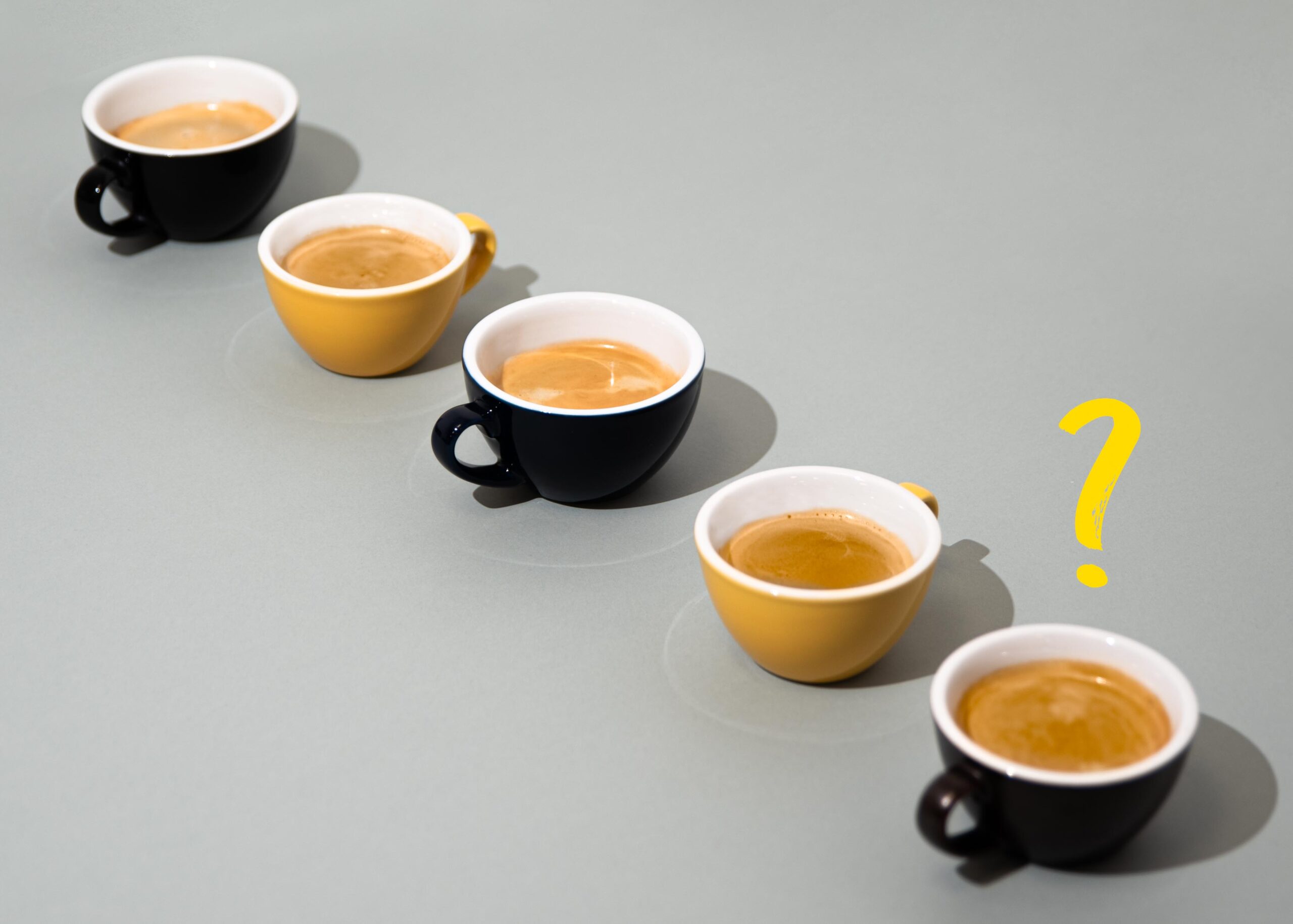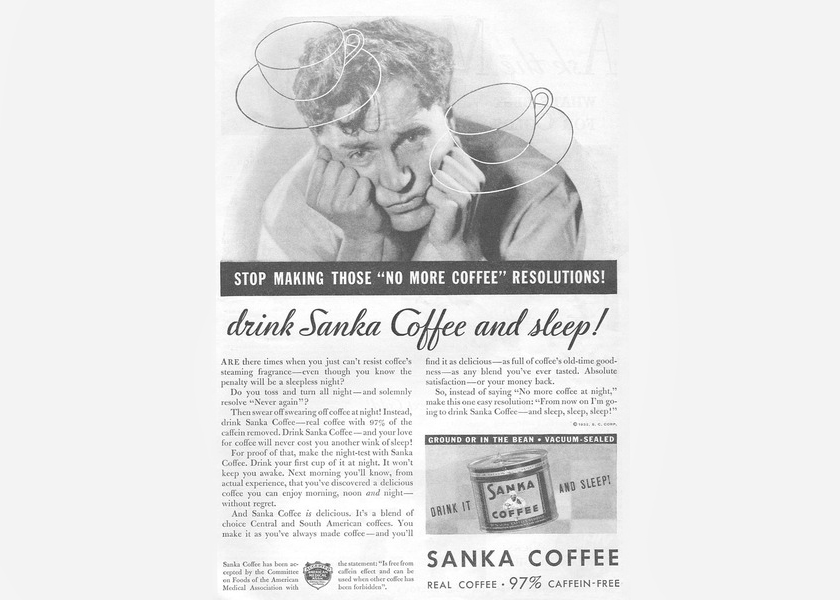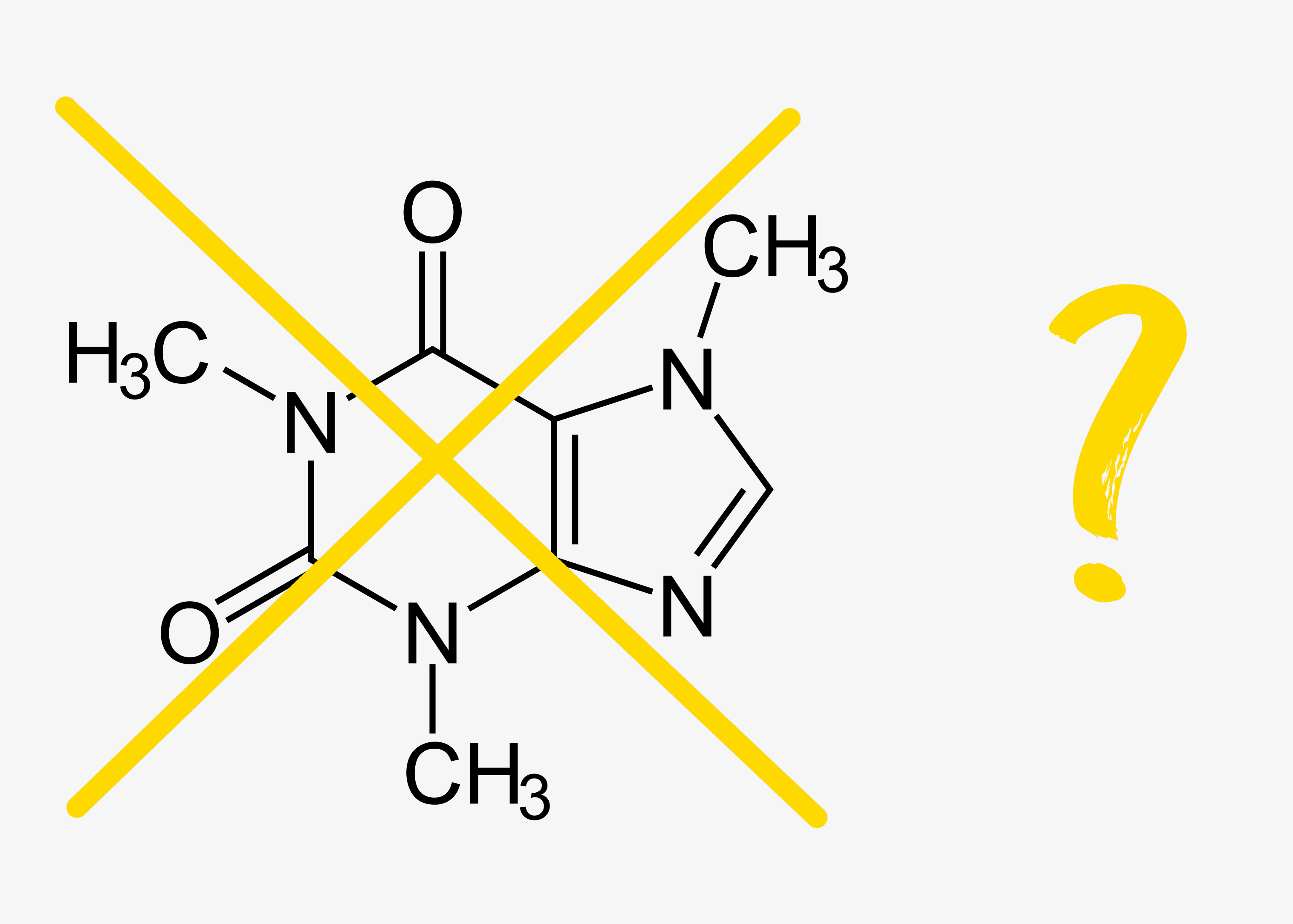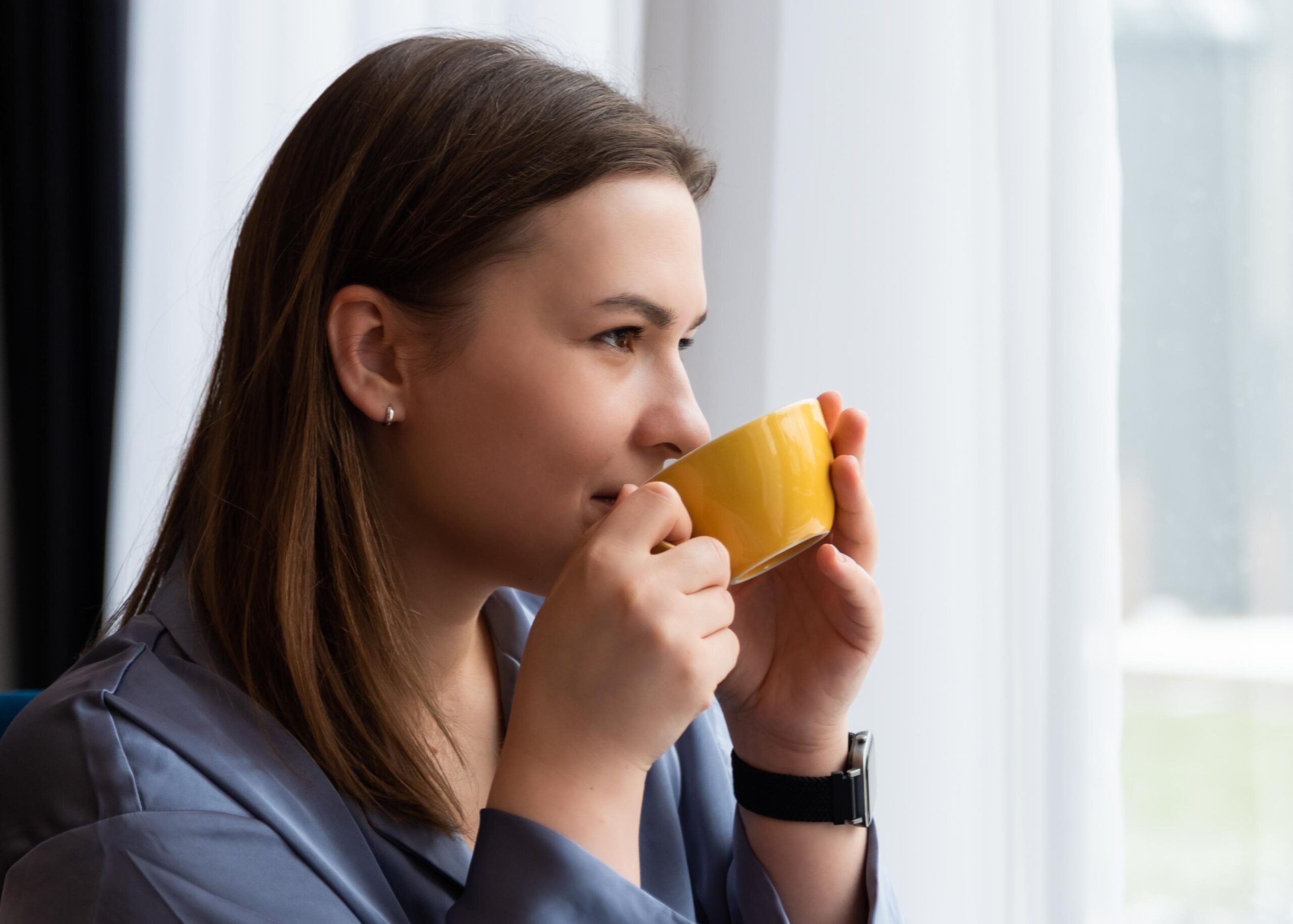Decaffeinated coffee: Things you should still learn about

Decaf coffee has been getting more and more attention lately—however, we couldn’t help but notice the dark shadow of distrust and suspicion that seems to be trailing after it persistently wherever it goes. People often say that “decaf coffee must be quite tasteless”. Others complain that “who knows how they’ve removed the caffeine from it” and suggest that “it’s probably filled with all sorts of chemicals that surely can’t be good for your health”. Some even wonder “if it’s truly caffeine-free” or express doubt as to whether “it’s even possible for this type of coffee to ever really taste good”…
Having been faced with views like these time and time again, we’ve finally decided to dispel these myths by going a bit deeper into the topic. Let’s try and find out, once and for all, if decaffeinated coffee can truly boast high quality and delicious flavours! And, as we’re doing that, let’s also discuss the things that you should pay attention to when choosing the right caffeine-free blend for you.
What Is Caffeine?

Decaf coffee is meant to help us enjoy those beloved coffee flavours without experiencing the effects of caffeine. Now, caffeine is a bitter, odourless, white, stimulating substance that occurs naturally in various nuts, seeds and leaves belonging to more than sixty different plant species found in Africa, East Asia and South America. Some of the best-known sources of caffeine include:
- Coffee beans
- Tea leaves
- Cacao pods
- Kola nuts
Caffeine has plenty of health benefits (you can read more about them here) and boasts various different uses. Coffee, cocoa and chocolate drinks, cola, energy drinks, chocolate, numerous supplements and medicines all contain caffeine. Before you start getting worried, keep in mind that humans tend to have a relatively high level of caffeine tolerance. For healthy adults, the maximum recommended daily caffeine intake amounts to as much as 400 mg—which equals around 4 standard (240 ml) cups of filter coffee. That’s quite decent, isn’t it?
Who Should Limit Their Caffeine Intake?

There are some groups of people who are advised to either limit their caffeine intake even further or, in some cases, quit using it altogether. Such groups include those who are naturally sensitive to caffeine, pregnant women, people who suffer from anxiety, high blood pressure, sleep disorders, heart conditions or gastrointestinal diseases, as well as those who take medications that don’t pair with caffeine that well.
If you’ve already gone above your daily limit, you’re part of this group too! We’ve all been there: you’re about to grab another cup of coffee, and then it dawns on you that this must be your fifth, sixth or even seventh serving for the day. The rapid heartbeat and shaky hands suddenly start making sense…
We’ve got good news though: there’s no need for you to forego a cup of coffee in order to avoid caffeine!
Decaf Coffee: What Is It Exactly?

There are scientists nowadays who are actively engaged in various experiments focused on cultivating decaffeinated coffee beans—however, the majority of coffee plants being grown today still produce beans brimming with the stimulant. Caffeine has one crucial job: he aids coffee plants in their fight against pests. So, as it stands now (we may have to change this definition in the future), decaf coffee is coffee that had caffeine removed from it in one way or another.
It’s interesting to note that the history of decaffeination has only recently stepped into its second century. Just like with most significant inventions, one lucky man stumbled upon this one by a complete accident. In 1903, Ludwig Roselius, a German coffee merchant, welcomed one of his usual large coffee shipments in a local sea port. His joy was, however, soon marred by the realisation that a raging storm had flooded his precious coffee beans during their voyage and left them soaked in water. While he did feel like getting rid of the beans immediately at first, Ludwig ultimately decided to give them a second chance: he washed the beans off and roasted them regardless. The result was surprising: coffee brewed from these beans still tasted like coffee, but its stimulating effect was gone.
After experimenting for a few years, Roselius finally patented the first industrial decaffeination technology in 1906. The process utilised a salt solution and a chemical solvent called benzene. In the same year, all the way over in the United States, Ludwig started manufacturing caffeine-free coffee: sold under the name of Sanka, the drink was widely advertised and did not take long to turn into a new trend. Today, this decaffeination method has already been replaced by various others: unfortunately, benzene was eventually found to be a dangerous carcinogen. Perhaps this is what ruined the reputation of this type of coffee? The times are definitely different though and decaffeination technologies have improved greatly since then.
Decaffeination Methods: Which One’s the Best?

Nowadays, you’re likely to encounter one of these three decaffeination methods: solvent-based processes (these can employ methylene chloride or ethyl acetate), the famous Swiss Water process, which utilises water and green coffee extract, or the most recent method that’s based on the use of carbon dioxide (CO2). Before we go on to discuss each of these technologies in more detail, let’s see what they have in common:
- Caffeine is always removed from green (unroasted) coffee beans.
- The biggest challenge here is separating caffeine molecules while leaving the remaining chemical compounds intact. This is far from an easy task, given the fact that there are over 1000 such compounds found in coffee, and each of them has a bearing on the flavour and aroma of the prepared brew.
- Caffeine is water-soluble, so every decaffeination method employs water in one way or another. Water on its own isn’t enough though because other compounds dissolve in it too. To separate caffeine from these compounds, an additional substance of some sort is needed.
Solvents
When using this method, green coffee beans are first steamed or soaked in water to help them release caffeine with more ease later on. Caffeine is then removed from the beans using a direct or indirect method. The direct method involves immersing the beans in the solvent itself and leaving them there until caffeine is removed. The beans are then rinsed using water and steam, and eventually dried to recreate their original moisture content. The indirect method is different though. First, coffee is immersed in water and kept there until it releases the caffeine it has accumulated. As caffeine dissolves, so do other soluble flavour-related substances. The beans are then removed from the water and caffeine is separated from the latter using a special solvent. Having done that, the same coffee beans are put in the caffeine-free water again: this allows the beans to soak up their original flavours while remaining free of caffeine.
During this process, methylene chloride or ethyl acetate are commonly used as solvents. Removing caffeine with the help of methylene chloride is the cheapest option, yet it’s also the most controversial. The United States Food and Drug Administration (FDA) limits the use of methylene chloride: large amounts of this substance are associated with various health problems. Even though the amount of methylene chloride used for decaffeination is far below the approved norm and is hence completely safe (not to mention that the substance itself has no chance of remaining inside the beans after decaffeination), this method is still viewed with some suspicion. Keep in mind that if the process used to produce a certain caffeine-free coffee isn’t indicated on its packaging, it’s very likely that methylene chloride was employed for this purpose.
Another popular solvent is ethyl acetate. This organic compound is obtained from a mixture of ethanol and acetic acid. To extract natural ethanol, which is what’s most commonly used for decaffeination, sugarcane is often employed. This is why this method is also referred to as “sugarcane process”, or simply “natural process”. Ethyl acetate is highly flammable, so working with it is relatively risky though.
Swiss Water Process
As suspicion around solvents kept on growing, the search for better decaffeination technologies was soon on. The Swiss Water process was developed in 1933, in Switzerland (hence its name). In the 1980s, a factory was built in Canada, not far from Vancouver: this is where commercial use of the Swiss Water method began. Since the very start, the process boasted being “100% chemical-free” and capable of “preserving the finest flavours”. The method is valued for its environmentally friendly qualities, which are attested to by official certificates.
How does it work then? Well, green coffee beans are first immersed in hot water, which causes both caffeine and flavours to dissolve. The first batch of coffee beans, now rendered tasteless, is then removed from the water. Using special activated charcoal filters, this water is freed of caffeine. That’s how green coffee extract, or GCE, is obtained. A new batch of beans—this one still brimming with caffeine—is afterwards soaked in this liquid. Caffeine dissolves, yet all of the flavours are successfully retained thanks to the green coffee extract being saturated with them. The final result is 99.9% of caffeine removed from the beans, as well as the finest aromas and flavours being preserved to the maximum possible extent.
This subtle, gentle process is reserved exclusively for high-quality specialty coffees. Naturally, it’s quite expensive, so the price of such coffee tends to be higher too. Decaf coffee of this sort is easy to recognise: its packaging is always proudly adorned with the Swiss Water Process label. In our opinion, this label serves as a true symbol of exceptionally fine coffee.
Carbon Dioxide (CO2)
The carbon dioxide process is the latest innovation in the decaf world. It was developed in the Max Planck Institute by a German chemist named Kurt Zosel. The method uses liquefied carbon dioxide gas, which helps extract caffeine without affecting the flavour molecules. Filled with extracted caffeine, this gas is then moved to a different container: in there, the gas returns to its original state, leaving caffeine behind. Afterwards, carbon dioxide is pumped into yet another container, allowing for the gas to be reused, while the extracted caffeine is sold to companies involved in the manufacture of medicines, cosmetics, energy drinks and various other products.
Due to substantial costs, this decaffeination method is usually reserved for coffee manufactured and sold in large amounts. The process itself is viewed very positively: it does well at preserving flavours, aromas and the original coffee structure. Just like the Swiss Water Process label, the CO2 mark is also displayed proudly by manufacturers on the packaging of their coffees.
How Much Caffeine Is There in Decaf Coffee?
Does the question sound weird? And yet it makes perfect sense! No matter how hard we try, we won’t be able to remove every bit of caffeine from the beans. European law states that coffee can be considered decaf as long as “the anhydrous caffeine content does not exceed 0.3 % by weight of the coffee-based dry matter”. What this means is that decaffeination methods used today must remove at least 97% of the caffeine occurring naturally in coffee.
A standard (240 ml) cup of filter coffee contains around 96 milligrams of caffeine, a 30-ml serving of espresso boasts about 63 milligrams, while a decaffeinated brew limits itself to as little as 2–3 milligrams. If you’re interested in the caffeine content of other coffee drinks or different beverages, you can read more about it in our blog post How Much Caffeine Is in a Cup of Coffee?.
While it’s true that decaffeinated coffee does indeed contain some caffeine, think about it this way: to experience the slightest stimulating effect from drinking this type of coffee, you’d have to rival the 19th century French writer Honoré de Balzac, who was known to consume more than 50 cups of strong Turkish coffee every single day. As it is, there’s no need for you to worry about the slight bit of caffeine hidden in your decaf cuppa. Well, unless you do decide to take on the challenge…
Delicious & Decaf: Is It Even Possible?
We certainly don’t mean to say that coffee with no caffeine in it is going to taste the exact same as coffee brimming with caffeine. This simply can’t be done: elimination of the bitter particles of this stimulating substance has a direct effect on flavour, body and acidity. Nor are we trying to say, however, that decaf coffee is less delicious or even flavourless—far from it! We’ve performed a little experiment of our own more than once by treating our colleagues or clients to a decaffeinated brew without them knowing. So far, none of them could tell the difference until we revealed our secret.
It’s also true that finding a truly delicious decaf variety to sip on is no easy task. There are a few reasons behind this. First, there’s plenty of coffee connoisseurs around the world, ready to grab the finest coffees the minute they hit the market—and these coffee lovers are rarely willing to change a thing about their favourite brew. So, it’s certainly true, in part, that high-quality coffee doesn’t go through the process of decaffeination very often. Secondly, decaf beans are more difficult to roast properly, which means that most roasters aren’t too keen on taking on the added risk.
There’s one factor that changes everything, however: it’s the ever-growing demand for non-stimulating coffee. Not only does this coffee have to be caffeine-free though. It must be delicious too! Having noticed this emerging trend, coffee manufacturers started adapting to the new reality. Purchasing some high-quality specialty decaf beans was close to impossible several years ago, but it’s very much doable nowadays. You’ll find one such coffee in our assortment too: it’s the fabulous Colombia Decaf Excelso, decaffeinated using the Swiss Water process and already popular amongst our clients. Still unconvinced that caffeine-free varieties can be just as delicious as the regular ones? Give this coffee a try and see for yourself!
What Should You Pay Attention to?
When choosing decaf coffee, consider the same factors you’d take into account when thinking about which caffeinated specialty variety to purchase:
- Origin. The higher the quality of the coffee used, the finer and more delicious it’ll remain after it’s been decaffeinated. How can you recognise such coffee though? Well, the general rule is this: high-quality varieties do not shy away from providing coffee lovers with lots of information about their origin (species, country, region and the like). The more details there are on the packaging of the coffee, the higher its quality is generally going to be.
- Roast level. We’ve already mentioned that roasting decaf beans is a challenge—which is why it often results in beans that have been over-roasted or even burnt. This shouldn’t be the case though! You won’t be able to see the beans through the non-transparent bag, but you can definitely pay attention to the roast level indicated on it. Avoid decaf varieties of a particularly dark roast.
- Roast date. The fresher the coffee, the more delicious the prepared brew. This is always true, whether we’re talking about caffeinated or decaffeinated varieties—in fact, freshness is even more crucial to the latter because decaf coffee oxidises faster, which causes it to lose its aromas and flavours with even more ease.
- Decaffeination process. The way in which caffeine has been removed from your coffee is, of course, important too. We’ve already mentioned that high-quality coffees tend to indicate the decaffeination method on the packaging or in the product description. If possible, you should always go for the natural, highly regarded methods, namely the Swiss Water process or CO2 decaffeination.
To Conclude…
So, as you can probably see, delicious decaf coffee is definitely out there: all you have to do is find the right variety for you. In our opinion, decaffeinated blends must be as tasty as their caffeinated counterparts—or perhaps even tastier. After all, it’s none other than taste that fans of decaf brews are after. So go ahead and enjoy coffee that’s truly delicious, regardless of its caffeine content!

